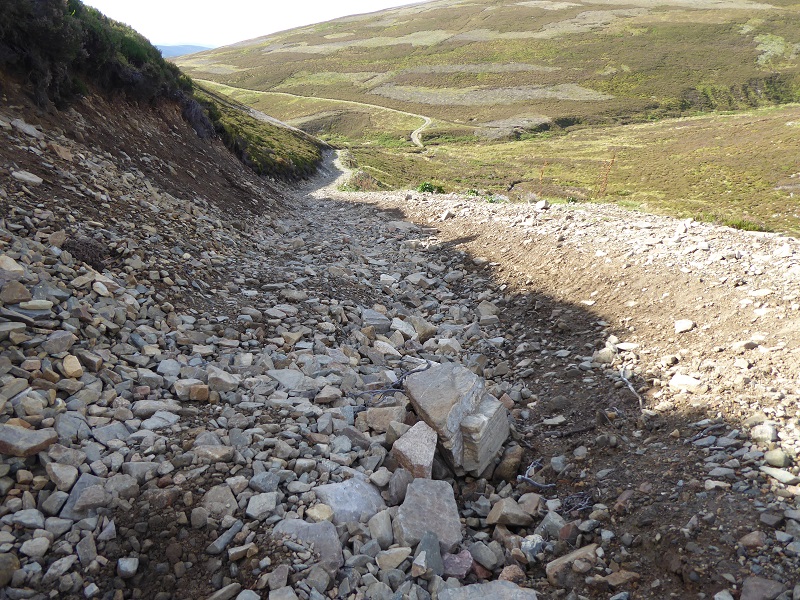
The Cairngorms National Park Authority (CNPA) met with the Scottish Gamekeepers Association (SGA) on the 29 September to discuss the National Park Partnership Plan consultation and specific issues around grouse management. The SGA raised concerns about a recent blog on the CNPA website which they felt did not reflect the work being done on grouse moors.
There was a robust exchange of views with Gamekeepers setting out their views on grouse and moorland management and the CNPA setting out the need to debate future management as part of the consultation. The meeting ended with an agreement to meet more regularly with the SGA and Moorland Groups so that further discussion can take place on these issues.
I welcomed (see here) the original blog by Will Boyd Wallis for trying to promote debate on how our grouse moors should be managed but criticised it for not being radical enough. While we already know that the Scottish Gamekeepers Association, who act on behalf of their employers, the landowners, object to any debate on moorland management what is interesting is that the CNPA has had to give them time to air their much voiced views. The danger here is that the CNPA tries to convince itself that there is a middle way, in which the current lack of any real action is continued into the next Partnership Plan, and this is then justified as a need to hold the ring between two opposing interests.
The third sign of the pressure the CNPA is under was the open attack by Fergus Ewing, MSP for Inverness and Nairn, but now Cabinet Secretary for the Rural Economy in his column in the Strathie last week (see here) . Fergus Ewing states the CNPA meeting with the Scottish Gamekeepers Association was “following my intervention, subsequently arranged actually to hear the views of local keepers and others”. In other words he forced the CNPA to meet the representatives of the people who, on behalf of the landowners, have been responsible for killing so much wildlife in the National Park. He goes on to say “But in a letter to me the park refused to accept there was anything wrong, and refused to permit the other side of the case to be published on its website. Given that a formal park consultation is ongoing, that does not seem to be balanced or fair. The second principle of natural law is – Audi Alteram Partem – hear both sides of the case! ”
Fergus Ewing does not appear to realise that while there are two sides to the case on moorland management, the CNPA at present is not on either side. It has been sitting on a fence somewhere in the middle. If Fergus Ewing wants SGA’s views promoted on the CNPA website he should also, according to the Latin, be calling for Raptor Persecution Scotland, the LINK hill tracks group etc to be given space on the CNPA blog.
What the SGA, the landowners and now apparently Fergus Ewing are worried about is that the CNPA might now at last, in the face of overwhelming evidence, jump off the fence and start to stand up for the conservation purpose of the National Park and develop an altnerative plan for the moorlands in the National Park (some of which might be to allow these areas to go wild). This would end gamekeeping as we know it but could also create more and better paid jobs.
Fergus Ewing does not have Ministerial responsibility for National Parks but I would not underestimate the pressure he will be putting on Roseanna Cunningham, the Environment Secretary, to ensure the new CNPA partnership plan does nothing to address the destruction going on in the moorlands of our National Park. Both the CNPA and Roseanna Cunningham should stand up to both Fergus Ewing and the landowning interests which have been working on him behind the scenes.
Both should take heart from the annoucement yesterday that there is to be a debate in the UK Parliament about banning driven grouse shooting on 31st October. Many of the people who signed were from Scotland and this is a clear sign that public opinion is now in favour of changing the ways our moorland is managed.

Ah, Butcher Ewing … Clearly missing his erstwhile role as trasher-in-chief of Scotland’s uplands. Dismally predictable.
Are you missing the point that the CNPA does not own the land within the park and therefore is quite rightly being encouraged to work WITH the people who own it and manage it to have sensible discussions on the future. Running roughshod over people doesn’t usually make any beneficial progress, fostering a collaborative working partnership takes more effort but is the only way to move forward. The original blog had strong overtones against moorland managed for grouse. In my humble opinion, I don’t think that was a particularly helpful starting position to alienate the very people the CNPA need to work with.
You hit it on the nail, how the hell can a national park be owned by different people. Surely the a national park should be owned by the country not a bunch of hoorah henries.